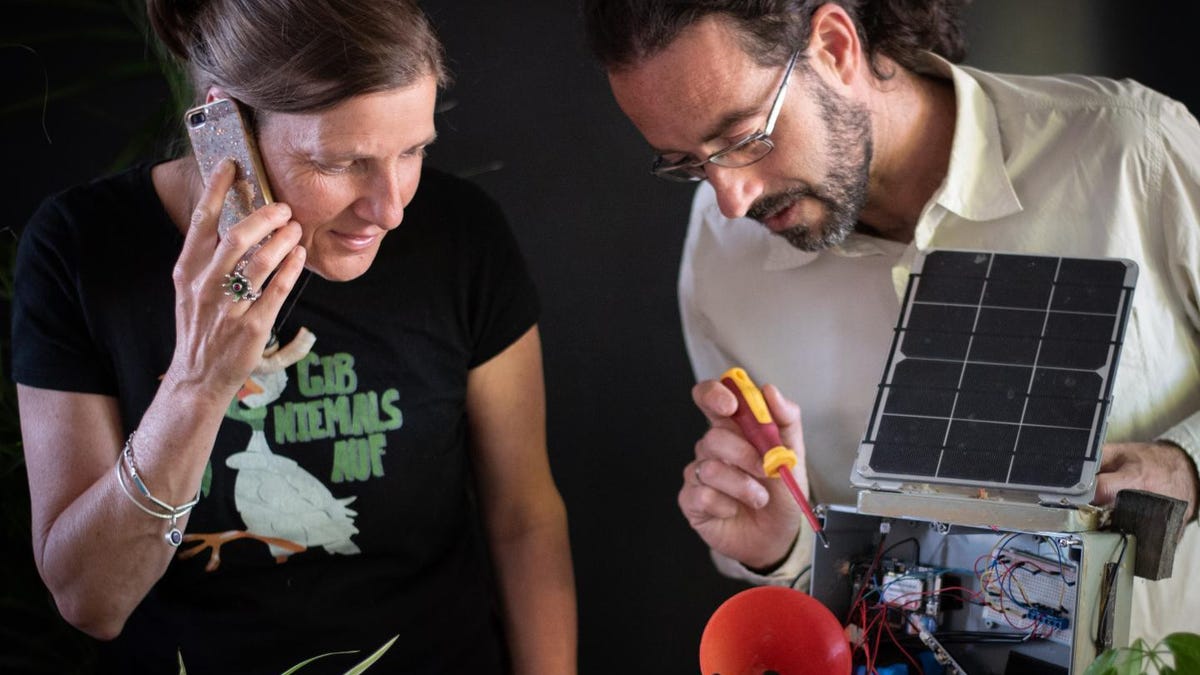Scientists create special phone to dial up chatty frogs in the wild
Ribbits in real time. Researchers ask themselves, "Why make so many nighttime pond visits when you can pick up a FrogPhone instead?"

Researchers Anke Marie Hoefer and Adrian Garrido Sanchis test the FrogPhone.
Ring, ring. Hello? Ribbit, ribbit.
That's how I imagine a FrogPhone would work, and I'm not too far from the reality. Researchers who study amphibians have figured out a way to phone into frog habitats using a special solar-powered device that really is called a FrogPhone.
The FrogPhone comes from a collaboration between several Australian research institutions. It uses a cellular mobile data network to let scientists dial in on demand and listen to the sounds of frog calls. This can help researchers learn which animals are present in a certain area.
The waterproof, solar-powered gadget also sends text messages with water and air temperature and battery data.
The FrogPhone in its natural habitat.
"The FrogPhone will help to drastically reduce the costs and risks involved in remote or high intensity surveys. Its use will also minimize potential negative impacts of human presence at survey sites," said Australian Capital Territory and Region Frogwatch Program coordinator Anke Maria Hoefe, co-author of a paper on the device published this week in the British Ecological Society's Methods in Ecology and Evolution journal.
The researchers conducted a successful field trial of the FrogPhone and found it could save researchers travel time and reduce the costs of conducting animal surveys.
There are a few limitations. The gadget works only where there's a decent cellular network, and more than one FrogPhone might be needed to monitor large areas. The researchers are considering a satellite-connected version that could be placed in remote locations.
I suspect there's an untapped niche of regular people who'd love to dial into frog habitats as an alternative to white-noise generators. Scientists, could we make that happen?
Originally published Dec. 6, 9:56 a.m. PT.

